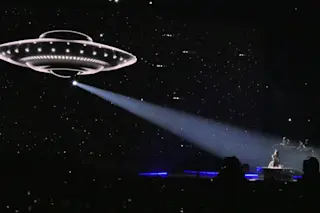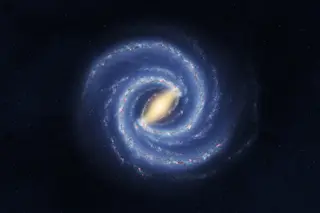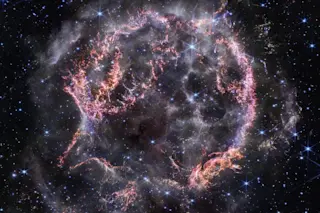For once, nature did not throw us a curveball. Last spring, two teams studying microwave radiation left over from the Big Bang reported that the overall shape of the universe is flat. In other words, parallel beams of light travel in straight lines and never meet, just like parallel lines in high school geometry class. That finding comes as a bit of a relief, considering that some odd cosmological models had predicted the universe could have the form of a doughnut or a saddle.
These multiple blue smoke rings are actually a single distant galaxy whose image has been split and magnified by curved space around the nearer cluster of yellow galaxies.Photograph courtesy of W. Colley/NASA
But don't throw away the aspirin just yet. This flat-space business applies only to the cosmos as a whole. According to Albert Einstein's general theory of relativity, every mass creates its own little disturbance, ...














